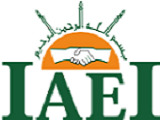Determinants of E-wallet Acceptance Among Low-Income Group in Malaysia: a Pilot Study
Abstract
Developing acceptance of e-wallets among low-income groups is challenging due to factors such as financial limitations, digital literacy gaps, and concerns about security and usability. This study proposes a relationship model using a quantitative research design to validate the hypothesized factors and establish their interconnections. The key determinants influencing e-wallet acceptance include performance expectancy, effort expectancy, and facilitating conditions, with behavioral intention serving as a mediating factor. To ensure the reliability and validity of the research instrument, a two-step verification process was conducted. First, a panel of experts reviewed the questionnaire during the validation phase, and their feedback was incorporated. Second, a pilot study was conducted to examine the instrument's consistency using Cronbach’s Alpha coefficient reliability screening in SPSS 29 software. The results confirmed that all items were reliable, with a Cronbach’s Alpha coefficient exceeding 0.7, indicating strong internal consistency
Keywords
References
Al-Amri, R., Maarop, N., Jamaludin, R., Samy, G. N., Magalingam, P., Hassan, N. H., Ten, D. W. H., & Daud, S. M. (2018). Correlation Analysis Between Factors Influencing the Usage Intention of NFC Mobile Wallet Payment. N Journal of Fundamental and Applied Sciences, 10, 215–228. https://doi.org/10.4314/jfas.v10i2s.18
Aransyah, M. F., Roy, J., & Aprianti, Y. (2020). Innovation resistance and perceive novelty on e-wallet services. Business, Computer Science, 2, 115–122. https://journal.feb.unmul.ac.id/index.php/MICEBProceeding/article/download/7101/912
Bank Negara Malaysia. (2022). Financial Sector Blueprint 2022-2026. pp. 1-128. https://www.bnm.gov.my/documents/20124/5915429/fsb3_en_book.pdf
Bank Negara Malaysia. (2022). BNM Annual Report 2022. pp. 1-19. https://www.bnm.gov.my/documents/20124/10150308/ar2022_en_ch1e.pdf
Bhatiasevi, V. (2016). An extended UTAUT model to explain the acceptance of mobile banking. Information Development, 32(4), 799-814.
Balakrishnan, V., & Shuib, N. L. M. (2021). Drivers and inhibitors for digital payment acceptance using the Cashless Society Readiness-Acceptance model in Malaysia. Technology in Society, 65, 101554. https://doi.org/10.1016/j.techsoc.2021.101554
Chao, C. M. (2019). Factors determining the behavioral intention to use mobile learning: An application and extension of the UTAUT model. Frontiers in psychology, 10, 446627.
Chauhan, S., & Jaiswal, M. (2016). Determinants of acceptance of ERP software training in business schools: Empirical investigation using UTAUT model. The International Journal of Management Education, 14(3), 248-262.
Chawla, D., & Joshi, H. (2019). Consumer attitude and intention to adopt mobile wallet in India - An empirical study. International Journal of Bank Marketing, 37(7), 1590-1618.
Choi, Y. & Sun, L. (2016). Reuse Intention of Third-Party Online Payments: A Focus on the Sustainable Factors of Alipay. Sustainability, 8, 147.
Chresentia, S., & Suharto, Y. (2020). Assessing consumer acceptance model on e-wallet: An extended UTAUT2 approach. International Journal of Economics, Business and Management Research, 4(06), 232-244.
Chresentia, S., & Suharto, Y. (2020). Assessing consumer acceptance model on e-wallet: An extended UTAUT2 approach. International Journal of Economics, Business and Management Research, 4(06), 232-244.
Gbongli, K., Xu, Y., & Amedjonekou, M. K. (2019). Extended Technology Acceptance Model to Predict Mobile-Based Money Acceptance and Sustainability: A Multi-Analytical Structural Equation Modelling and Neural Network Approach. Sustainability, 11: 1-33.
Dhanya, B. K. (2019). Consumer Perception of Digital Payment Mode. International Journal of Research and Analytical Reviews (IJRAR), 6(1).
George, D., & Mallery, P. (2019). IBM SPSS statistics 26 step by step: A simple guide and reference. Routledge.
Ghalandari, K. (2012). The effect of performance expectancy, effort expectancy, social influence and facilitating conditions on acceptance of e-banking services in Iran: The moderating role of age and gender. Middle-East Journal of Scientific Research, 12(6), 801-807.
Glasow, P. A. (2005). Fundamentals of survey research methodology. Retrieved January, 18, 2013.
Gupta, S., & Kim, H. W. (2010). Value‐driven Internet shopping: The mental accounting theory perspective. Psychology & Marketing, 27(1), 13-35.
Hoo, W. C., Ooi Kah Yan, J., Liang, T. P., & Hou Hong Ng, A. (2021). Age as Moderator between Factors Influencing and Acceptance of E-Wallet in Malaysia. Review of International Geographical Education Online, 11(8).
Hoyle, R. H. (Ed.). (2012). Handbook of structural equation modeling. Guilford press.
Intarot, P., & Beokhaimook, C. (2018). Influencing factor in e-wallet acceptant and use. International Journal of Business and Administrative Studies, 4(4), 167.
Isaac, E., Uwaks, G., & Harcourt, P. (2022). Content Validity in Educational Assessment. 10(2), 57–69.
Ismail, S., Serguieva, A., & Singh, S. (2010). Assessment of the Reliability and Validity of a Proposed Questionnaire Measuring Students' Attitude. Conference: The 8th IAMB 2010 Conference, June 2010
Izwan, I. (2021). "E-wallet Use in Malaysia Growizing". New Straits Time. https://www.nst.com.my/opinion/columnists/2021/04/683345/e-wallet-use- malaysia-growing
Kamalul Ariffin, S., Mohan, T., & Goh, Y. N. (2018). Influence of consumers’ perceived risk on consumers’ online purc
Karahanna, E., Straub, D. W., & Chervany, N. L. (1999a). Information technology acceptance across time: A cross-sectional comparison of pre-acceptance and post-acceptance beliefs. MIS quarterly, 183-213.
Karahanna, E., & Straub, D. W. (1999). The psychological origins of perceived usefulness and ease-of-use. Information & management, 35(4), 237-250.hase intention. Journal of research in Interactive Marketing, 12(3), 309-327.
Karim, M. W., Haque, A., Ulfy, M. A., Hossain, M. A., & Anis, M. Z. (2020). Factors influencing the use of E-wallet as a payment method among Malaysian young adults. Journal of International Business and Management, 3(2): 1-12
Kock, N. (2016). Non-normality propagation among latent variables and indicators in PLS-SEM simulations. Journal of Modern Applied Statistical Methods, 15, 299-315.
Kock, N., & Hadaya, P. (2018). Minimum sample size estimation in PLS‐SEM: The inverse square root and gamma‐exponential methods. Information systems journal, 28(1), 227-261.
Kumar, M., Talib, S. A., & Ramayah, T. (2013). Business research methods. Oxford Fajar/Oxford University Press.
Liébana-Cabanillas, F., Singh, N., Kalinic, Z., & Carvajal-Trujillo, E. (2021). Examining the determinants of continuance intention to use and the moderating effect of the gender and age of users of NFC mobile payments: A multi-analytical approach. Information Technology and Management, 22(2), 133
Malmqvist, J., Hellberg, K., Möllås, G., Rose, R., & Shevlin, M. (2019). Conducting the pilot study: a neglected part of the research process? Methodological findings supporting the importance of piloting in qualitative research studies. International Journal of Qualitative Methods, 18. https://doi.org/10.1177/1609406919878341
Morin, K. H. (2013). Value of a pilot study. Journal of Nursing Education, 52(10), 547–548. https://doi.org/10.3928/01484834-20130920-10
Pallant, J. (2020). SPSS survival manual: A step by step guide to data analysis using IBM SPSS. Routledge.
Ramayah, T., Cheah, J., Chuah, F., Ting, H., & Memon, M. A. (2018). Partial least squares structural equation modeling (PLS-SEM) using smartPLS 3.0. In An Updated Guide and Practical Guide to Statistical Analysis. Pearson
Sekaran, U., & Bougie, R. (2016). Research Methods for Business: A Skill Building Approach (7th ed.). United Kingdom: John Wiley & Sons Ltd.
Tamilmani, K., Rana, N. P., Wamba, S. F., & Dwivedi, R. (2021). The extended Unified Theory of Acceptance and Use of Technology (UTAUT2): A systematic literature review and theory evaluation. International Journal of Information Management, 57, 102269. https://doi.org/10.1016/j.ijinfomgt.2020.102269
Vernon, L., & See, P. P. (2022b). Factors influencing the intention to adopt E-Wallet: A regional distribution perspective in Malaysia. Journal of Business and Social Sciences, Vol.2022:016(eISSN:2805-5187). https://www.researchgate.net/publication/362944046
Venkatesh, N., Morris, N., Davis, N., & Davis, N. (2003). User acceptance of information Technology: toward a unified view. MIS Quarterly, 27(3), 425. https://doi.org/10.2307/30036540
DOI: http://dx.doi.org/10.24042/ijebi.v10i1.26415
Refbacks
- There are currently no refbacks.
Copyright (c) 2025 Nur Syafatul Aqilla Binti Samar, Shafinar Ismail, Nurhayati Abd Rahman

This work is licensed under a Creative Commons Attribution-ShareAlike 4.0 International License.
Ikonomika : Jurnal Ekonomi dan Bisnis Islam is a Journal of Islamic Economics and Business, Published by the Faculty of Islamic Economics and Business at UIN Raden Intan Lampung Indonesia. This work is licensed under a Creative Commons Attribution-ShareAlike 4.0 International License.






11.png)

.png)
1.png)


.png)
1.png)
.png)
.png)
.png)
2.png)
.png)
.png)
.png)
2.png)
5.png)